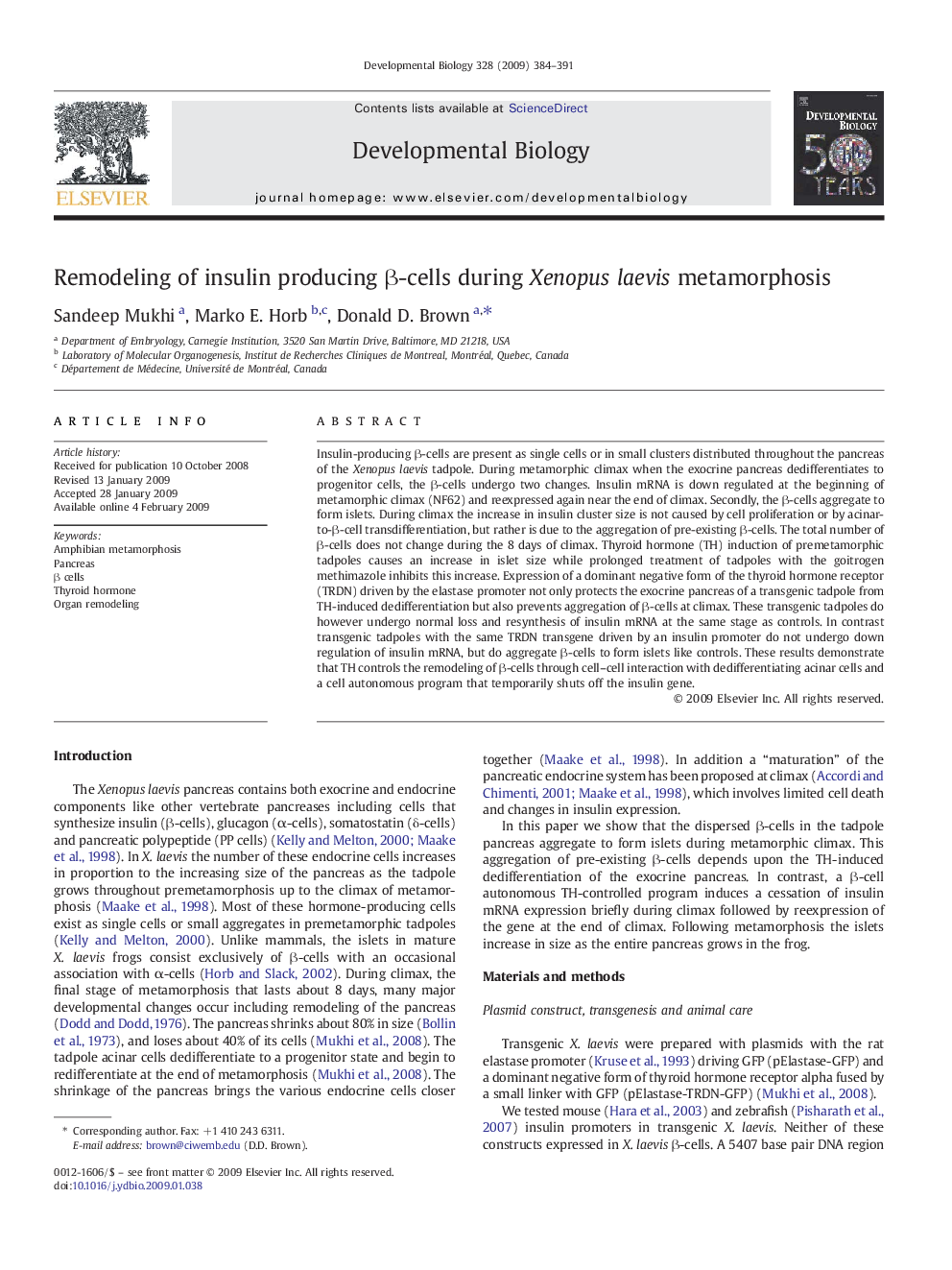| Article ID | Journal | Published Year | Pages | File Type |
|---|---|---|---|---|
| 10933346 | Developmental Biology | 2009 | 8 Pages |
Abstract
Insulin-producing β-cells are present as single cells or in small clusters distributed throughout the pancreas of the Xenopus laevis tadpole. During metamorphic climax when the exocrine pancreas dedifferentiates to progenitor cells, the β-cells undergo two changes. Insulin mRNA is down regulated at the beginning of metamorphic climax (NF62) and reexpressed again near the end of climax. Secondly, the β-cells aggregate to form islets. During climax the increase in insulin cluster size is not caused by cell proliferation or by acinar-to-β-cell transdifferentiation, but rather is due to the aggregation of pre-existing β-cells. The total number of β-cells does not change during the 8 days of climax. Thyroid hormone (TH) induction of premetamorphic tadpoles causes an increase in islet size while prolonged treatment of tadpoles with the goitrogen methimazole inhibits this increase. Expression of a dominant negative form of the thyroid hormone receptor (TRDN) driven by the elastase promoter not only protects the exocrine pancreas of a transgenic tadpole from TH-induced dedifferentiation but also prevents aggregation of β-cells at climax. These transgenic tadpoles do however undergo normal loss and resynthesis of insulin mRNA at the same stage as controls. In contrast transgenic tadpoles with the same TRDN transgene driven by an insulin promoter do not undergo down regulation of insulin mRNA, but do aggregate β-cells to form islets like controls. These results demonstrate that TH controls the remodeling of β-cells through cell-cell interaction with dedifferentiating acinar cells and a cell autonomous program that temporarily shuts off the insulin gene.
Related Topics
Life Sciences
Biochemistry, Genetics and Molecular Biology
Cell Biology
Authors
Sandeep Mukhi, Marko E. Horb, Donald D. Brown,
